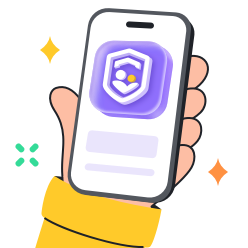Parallel parenting is a concept that is used to shield children against parental conflict. It is effective when partners struggle to communicate and collaborate with one another. This style will reduce the interaction and contact between parents and concentrate on the well being of the child. Parallel parenting is a viable strategy in the contemporary high-conflict family context, which aims at alleviating child-related stress. It enables parents to remain in their positions without subjecting children to conflicts.
In this guide, the concepts of parallel parenting, its ideals, advantages, issues, and tips on how it will succeed will be discussed. The idea is to make parents make the right decision regarding their family that would guarantee the safety and emotional well-being of the children.
What is parallel parenting?
Parallel parenting is a child custody procedure that is developed to suit parents who find it difficult to cooperate. According to the American Psychological Association, it is an arrangement whereby direct parental contact is minimized, resulting in reduced conflict and providing the two parents with the opportunity to maintain a safe role in it. Simply put, parallel parenting implies that parents take care of children alone with little interaction.



This is unlike traditional co-parenting, where parents work together. In its turn, parallel parenting separates liabilities and reduces communication. Both parents independently handle the child care when they are on their own. The two parents do not work jointly but rather they run parallel in their responsibilities.
Indicatively, during parallel parenting, the Parent A is in charge of school activities, homework, and bed time when the child is with him/her. Parent B does the same with the child in his or her care. They do not have to talk to each other and to arrange all the details on a daily basis. Communication occurs by means of notes, emails or third parties when needed.
Such an approach would fit high-conflict families where communication fails or results in fights. It offers a feasible means of sharing parenting without necessarily being in contact with each other. This is beneficial to the children as they are not exposed to the hostility of their parents. The roles of both parents are kept and the contact and conflict are minimised. This makes the environment less toxic in the upbringing of children.
Core principles of parallel parenting
Parallel parenting is based on a few principles that can help to protect children and ensure less conflict. To ensure that parents make the method effective, they should pay attention to the following:
- Reduced direct interaction: Only face-to-face or phone conversations in cases of emergency or scheduled visits.
- Well-defined duties: The parents share certain duties and do not interfere with each other’s time.
- Pay attention to the needs of the child: The needs of a child should take precedence over parental complaints.
- Third-party communication usage: Use email, texts, lawyers, or apps instead of personal communication.
- Home consistency: This means that there should be consistency in the homes in terms of rules, discipline and routine so that the child may not be confused.
- Emotion control: The parents strive to regulate anger and not to make negative comments towards the other parent.
- Plans that can be enforced in court: Have arrangements formalized through the court and parenting plans to give out precision and ramifications.
- Adhere to parental time: Use schedules and commitments and do not seek to discredit the other parent.
- Conflict avoidance: Deny having any arguments or any attempts to manipulate involving parenting.
- Regular review: Review the plan regularly to suit the changing needs of the child or to change with the circumstances of parents.
Use parental controls to better understand and care kids.
Understand the distinctions: co-parenting vs parallel parenting
Co-parenting and parallel parenting are two different parenting methods following the separation. There is a need to know their differences, which revolve around the style of communication, flexibility, and conflict management.
| Aspect | Co-parenting | Parallel Parenting |
| Communication | Open, ongoing, collaborative | Limited, mostly indirect |
| Flexibility | High; parents negotiate and adjust schedules | Low; rigid schedules and boundaries |
| Conflict Management | Direct efforts to resolve disagreements | Avoidance of direct conflict |
| Child Interaction | Joint decisions and shared parenting tasks | Independent parenting during separate times |
| Parental Relationship | Cooperative, respectful | Guarded, minimal interaction |
| Best For | Low-conflict or cooperative parents | High-conflict or hostile parents |
Co-parenting requires proper communication and respect. Parents make decisions and collaborate with each other on raising children. On the contrary, parallel parenting minimises parent-to-parent contact to ensure that there is no conflict with the other parent. It will enable parents to concentrate on their respective roles without any negotiation.
Is parallel parenting suitable for your kids and family?
To establish whether or not parallel parenting is appropriate to a family, real evaluation of the communication capacity and the level of conflict should be done. Parents must consider the impact of conflicts on their children physically and emotionally.
Consider these factors:
- Is the frequency of parenting discussions turning out to be argumentative?
- Is there any hostility, threats, and manipulation in communication?
- Do children suffer due to parental quarrel or lack of consistency?
- Is it possible that parents can stick strictly to a negotiated schedule without harsh negotiation?
- Has anything happened between parents: emotional or physical abuse?
When responding to high conflict, parallel parenting probably provides required protection to children.
This allows keeping the parents occupied and children at a minimum of exposure to destructive conflicts. It offers an arrangement to parents who can or cannot co-parent in a cooperative arrangement. It is, however, not a fit in all families. Parents can succeed only by maintaining strict boundaries and using indirect communication. Children must be given consistent routines and rules under parallel parenting.
Benefits of parallel parenting for children
There are various advantages of parallel parenting to children in high-conflict situations between parents.
- First, it will limit the exposure of children to quarrels of their parents, and studies have correlated it with emotional distress and behavioral difficulties. An emotional security is facilitated by a more relaxed atmosphere.
- Second, the routine of children is more predictable in both homes and consistent. This assists in building stability and order that is vital in healthy development.
- Third, parallel parenting builds a resilient situation through the establishment of a protective zone among the parent disagreements. Children are able to concentrate on their growth and not on the issues that the adults have.
- Fourth, it enables children to continue relationships with both parents, which decreases a sense of divided loyalty or abandonment.
The Child Welfare Information Gateway claims that children perform better when parents have less parental conflict (although the parents may communicate less). Parallel parenting focuses on limiting conflict and the involvement of both parents. This equilibrium contributes to healthier emotional and psychological results.
Challenges and limitations of parallel parenting parents must know
Parallel parenting is an effective parenting method, but it contains some limitations that need to be acknowledged by parents.
- According to Dr. Joan Kelly, one of the top family psychologists, a lack of communication may lead to misunderstanding. Parents can have a problem in coordinating choices involving education or health.
- Dr. Eleanor Maccoby, another leading developmental psychologist, found that poor communication, conflict, or rigid parenting can cause emotional distancing. Children may feel neglected or trapped between conflicting rules, which harms their sense of security and connection with parents. Her research highlights the importance of balanced, supportive parenting after separation.
- Moreover, legal experts mentioned that in the absence of cooperation, the parents can not follow plans, and the court intervention becomes necessary.
- Many studies have also revealed the lack of consistency in discipline in various households which may mislead children in case parents fail to unite closely in enforcing the rules.
All in all, scholars caution that parallel parenting is very demanding in terms of discipline and devotion. Failure to be flexible or changing communication may hurt its success. Thus, Parents should recognize these difficulties and seek professional assistance when needed.
How does parallel parenting impact children?
Real-life experiences demonstrate the effects of parallel parenting.
There was one study that followed children whose parents were in high conflict. After adopting parallel parenting, children’s stress levels declined and their academic performance improved.
In a different case, a family with a lack of a clear parallel parenting plan experienced confusion because of varying rules. The child displayed behavioral issues, and that is why consistency is necessary.
The third case showed some positive effects when parents communicated using written texts and kept one another informed using third parties. The child claimed that both parents made her feel safe and loved without experiencing conflict.
These examples show that when implemented with consistency and commitment, parallel parenting can provide children with the stability and emotional security they need to thrive, even amid parental conflict. By creating clear boundaries and focusing on the child’s well-being, it transforms a tense environment into one of calm, structure, and predictability. This allows kids to feel safe, supported, and loved by both parents despite ongoing disagreements.
Tips for parents to make parallel parenting work
Requested parallel parenting can be successful by taking such practical steps:
- Write out a detailed and written parenting plan and schedules, rules and responsibilities, which are well outlined.
- Use no other means of communication except written forms, such as email or parenting applications, to prevent a physical battle.
- It is necessary to pay attention to the needs of the child and disregard personal conflicts.
- Establish and maintain strict limits regarding the role and time of each parent and the child.
- Always stick to rules and routines in both houses in order to minimize confusion.
- Enlist counselors or mediation to help in solving challenging problems or conflict resolution.
- Always be patient and adjust with the changing circumstances as children grow.



Parallel parenting works best when structure and clear boundaries are supported by the right tools. Apps like FlashGet Kids help parents stay organized without direct contact, reducing conflict and confusion. Through features like location tracking, screen time control, and routine management, it ensures both parents remain informed and consistent. This keeps children’s lives stable and secure while allowing parents to communicate efficiently and peacefully across separate households.
How to develop a parallel parenting plan: essential components?
A parallel parenting plan is supposed to be structured and evidence-based and must include:
- Specified custody and visitation period with no overlaws.
- Strict rules and discipline must be observed consistently in both households.
- Communication processes are restricted to the use of written communication or third parties.
- Contact procedures and decision-making in an emergency.
- Concessions on education, healthcare, and extracurricular activities.
- These are conflict-solving mechanisms and ways to enforce compliance.
- Penalties against violations of the plan.
- Consistent revisions to modify the plan accordingly, depending on the changing needs of the child.
- Parents should set guidelines for child exchanges without direct contact.
- Opportunities for parental responsibilities concerning finances or special situations.
Such a structure helps in minimising misunderstandings and bringing peace to the children.
Final words
Parallel parenting can be of great help to families that are in high-conflict situations. It safeguards children from conflict while allowing both parents to play active roles. It is not easy but it provides the required stability and emotional security to children. Parents may integrate this method with support groups and therapy in order to make it more effective. It is possible to relieve tension by paying attention to the well being of the child and acting according to definite plans, which would help the parents to create a healthy environment. Parallel parenting is not an ideal thing, yet it can become the ultimate choice in families where people want to enjoy peace and protection in challenging situations.
FAQs
{faq start}
Is parallel parenting healthy for the child?
Yes. It also protects children against conflict, which leads to stability and emotional security.
Who should consider parallel parenting?
High-conflict parents who struggle to cooperate but want involvement with their kids can succeed with parallel parenting.
Is parallel parenting better than co-parenting?
It depends. Parallel parenting suits high-conflict families, while co-parenting works for low-conflict, cooperative parents.
What is parallel parenting with a narcissist?
Limited interaction approach with rigorous programming to avoid any form of manipulation and control.
{faq end}

